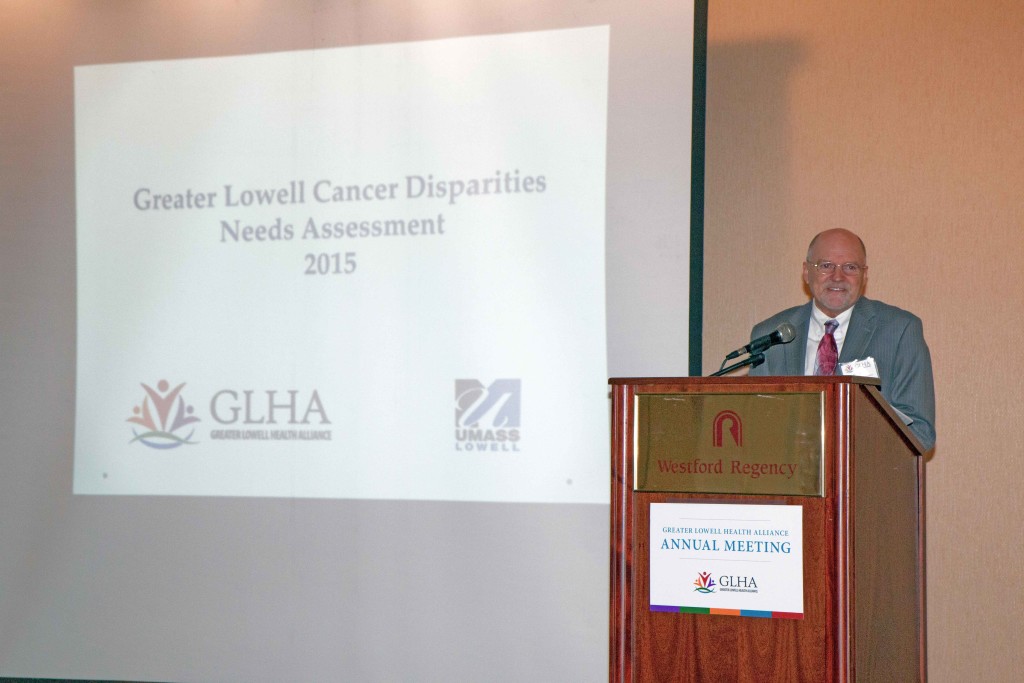 Report: Greater Lowell cancer rates higher than statewide
Report: Greater Lowell cancer rates higher than statewide
Poor, uninsured, immigrant populations at increased risk
By Grant Welker, gwelker@lowellsun.com
UPDATED: 09/27/2015
WESTFORD — Residents in Greater Lowell have higher cancer rates than the rest of the state, with the highest rates among poorer residents, according to a new report from the Greater Lowell Health Alliance and UMass Lowell.
Improving those rates, officials said Friday, will require better outreach to the poor, minorities, immigrants and people who are underinsured or have no insurance — all segments of the population found to be at higher risk of cancer.
Greater Lowell’s overall cancer death rate is 225 per 100,000 residents, according to the report. The statewide average is 185.
Cancer rates in the Lowell area were highest for lung cancer, at 80 per 100,000 residents. The statewide average for lung cancer is 70.
For someone who works more than one job, doesn’t speak English as a primary language, or faces other cultural factors, having a primary-care physician or following up on medical appointments aren’t always as high of a priority, said David Turcotte, a research professor at UMass Lowell who presented the study’s findings Friday at the Greater Lowell Health Alliance’s annual meeting.
“For those of lower socioeconomic status, health care is a luxury,” he said.
Risk factors are “primarily related” to income levels, the report said, with a “lack of awareness of cancer risk” in some segments of the population.
“Providers, professionals and key informants felt overall that patient perception of cancer in the Lowell area is poor,” the report said, and “that patient perception of care in Boston is better.
“The Lowell area studied includes Billerica, Chelmsford, Dracut, Dunstable, Lowell, Tewksbury, Tyngsboro and Westford. Data are not broken out by individual community.
Recommendations in the report call for increasing awareness, improving access and advocacy for patients, expanding interpreter services, and providing better transportation for those who require it to get to medical appointments.
Members of the Lowell Community Health Center, which serves many lower-income residents, said proper outreach and accommodation of the city’s diverse population are important in making a healthier community.
“We’re talking about cancer specifically, but cultural disparities are across all medical areas,” said Sheila Och, a deputy director at the health center. “We work on health care but we also work on social justice.”
Rates of cancer also differ among races, said Christopher Lathan, a faculty director for cancer-care equity at the Dana-Farber Cancer Center in Boston. Minorities tend to get lower levels of care, and the gap between white and black residents has not narrowed in cancer survival, even as overall rates have dropped, he said.
Many black residents see Dana-Farber as “a place where rich white people go to die,” Lathan said. “That’s really disturbing at many levels.”
Read the Lowell Sun article on GLHA’s groundbreaking report on cancer rates and disparities in Greater Lowell.
